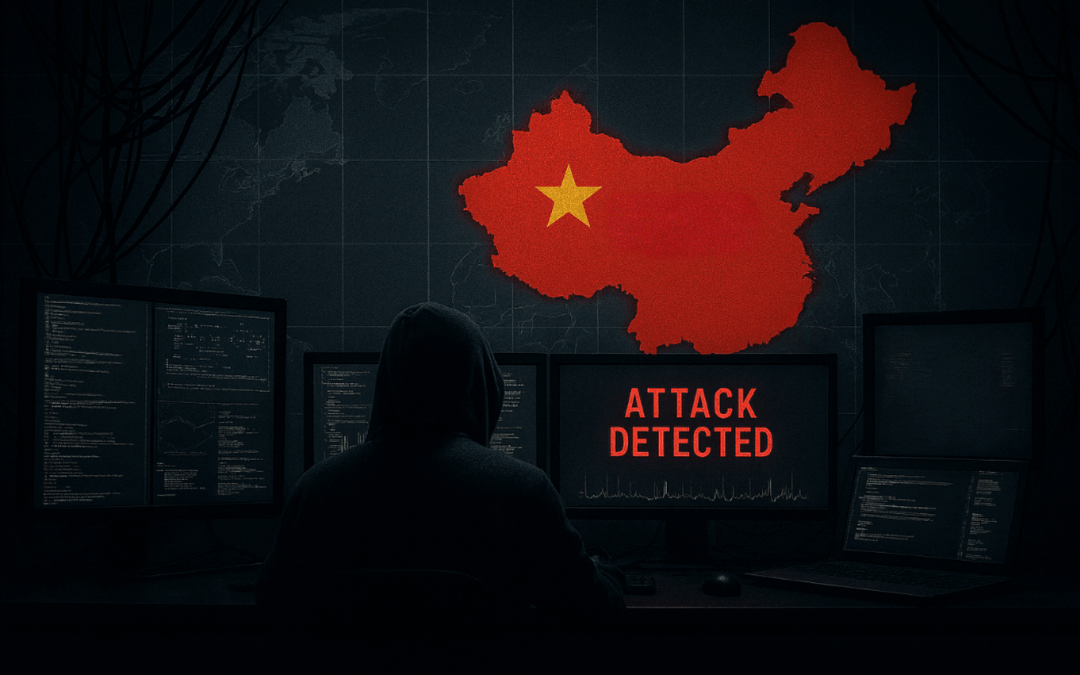In this era of heightened cyber espionage, the digital backbone of governments and businesses alike—networking giant Cisco’s products—is under siege, not from opportunistic cybercriminals, but from the world’s most sophisticated nation-state actors. In a stark reminder of the escalating geopolitical cyber battlefield, the U.S. Cybersecurity and Infrastructure Security Agency (CISA) issued an emergency directive on September 25, 2025, mandating federal agencies to patch critical zero-day vulnerabilities in Cisco firewalls amid widespread exploitation.
This isn’t isolated opportunism; it’s a calculated escalation by actors from China, Russia, and North Korea, who are increasingly targeting perimeter defenses to siphon intelligence, disrupt operations, and erode trust in critical infrastructure. With attacks persisting through reboots and upgrades, the message is clear: Nation-states are no longer knocking—they’re already inside, advancing their cyber espionage agendas.
The Cisco Zero-Days: A Gateway for Persistent Intrusion
At the heart of this crisis are three freshly disclosed vulnerabilities in Cisco’s Adaptive Security Appliance (ASA) and Firepower Threat Defense (FTD) software, which power firewalls and VPNs for millions of devices worldwide. CVE-2025-20333 (CVSS 9.9), a critical remote code execution (RCE) flaw in the VPN web server, allows authenticated attackers with valid credentials to execute arbitrary code as root via crafted HTTP requests. Paired with CVE-2025-20362 (CVSS 6.5), a medium-severity unauthorized access bug enabling privilege escalation without authentication, these flaws create a devastating chain: Bypass defenses, escalate rights, and burrow deep into networks, facilitating long-term cyber espionage.
A third vulnerability, CVE-2025-20363 (CVSS 9.0), another unauthenticated RCE risk, looms as a high-probability target, though not yet confirmed in the wild. Cisco disclosed these on September 25, 2025, after investigating intrusions dating back to May, revealing attackers tampering with read-only memory (ROM) for persistence—surviving reboots and firmware upgrades. This ROM manipulation, a hallmark of advanced persistent threats (APTs), deploys malware like RayInitiator (a multi-stage bootkit) and LINE VIPER (a shellcode loader for data exfiltration), as detailed in a U.K. National Cyber Security Centre (NCSC) analysis.
CISA’s Emergency Directive 25-03—only the second under the current administration—orders federal civilian agencies to hunt for compromises, submit forensic images by midnight September 26, 2025, disconnect end-of-support ASA devices, and patch supported ones immediately. Agencies must report compliance by October 3, with the flaws added to CISA’s Known Exploited Vulnerabilities (KEV) catalog. “CISA is directing federal agencies to take immediate action due to the alarming ease with which a threat actor can exploit these vulnerabilities, maintain persistence on the device, and gain access to a victim’s network,” stated CISA Acting Director Madhu Gottumukkala. Multiple U.S. agencies have already been breached, underscoring the campaign’s reach in the realm of cyber espionage.
The Nation-State Nexus: China Leads in Cyber Espionage, with Russia and North Korea Following
While CISA refrained from direct attribution—focusing instead on rapid mitigation—the fingerprints point squarely to state-sponsored operations, with China at the forefront of cyber espionage. Cisco links the attacks to the “ArcaneDoor” espionage campaign from early 2024, which targeted Cisco ASA devices using zero-days for malware implantation and data theft. Researchers from Censys have tied ArcaneDoor to a China-based threat group, exploiting similar flaws in VPN web services. This aligns with broader patterns: Chinese actors, often dubbed APT41 or Volt Typhoon, routinely hit network providers to feed a “global espionage system,” brute-forcing weak credentials on Cisco routers and exfiltrating configurations via custom scripts.
In 2025 alone, Beijing’s hackers have prioritized critical sectors like energy, AI, and telecom, using tools like RouterSploit to compromise unpatched Cisco gear in their cyber espionage efforts.
Russia isn’t far behind, with FSB-linked actors like “Static Tundra” exploiting legacy Cisco flaws such as CVE-2018-0171 in Smart Install (SMI) for remote code execution on end-of-life devices.
Since 2018, these operatives have deployed “SYNful Knock” malware on Cisco routers, targeting U.S. and global networks via unencrypted SNMP protocols. The FBI warns of ongoing campaigns against critical infrastructure, blending brute-force credential reuse with zero-day hunts. North Korea’s Lazarus Group, notorious for financial heists and sabotage, has pivoted to infrastructure hits, including telecoms and energy, often chaining Cisco exploits with Microsoft flaws for lateral movement.
The ODNI’s 2025 Threat Assessment flags all three nations as top threats, collaborating on hybrid operations that challenge U.S. defenses in semiconductors, biotech, and beyond.
This specialization—China on stealthy cyber espionage, Russia on disruptive persistence, North Korea on opportunistic chaos—mirrors the ransomware trends we explored earlier, but with geopolitical stakes. High-value targets like Cisco’s 2 million+ SNMP-enabled devices offer a multiplier effect: One breach cascades to supply chains, as seen in Volt Typhoon’s 2023 router compromises.
With 18 months of Chinese-led attacks on vendors like Ivanti and Citrix setting the stage, 2025’s Cisco spree signals a maturing threat: Nation-states are outpacing patches, turning everyday firewalls into cyber espionage outposts.
Defending the Perimeter: Actionable Steps for Resilience
For organizations beyond federal agencies—especially SMBs reliant on Cisco for remote access—these attacks demand urgency. While CISA’s directive targets government, the private sector must self-implement. Here’s a prioritized playbook:
- Patch and Isolate Immediately
- Apply Cisco’s emergency fixes for CVE-2025-20333, -20362, and -20363 across ASA and FTD devices. Prioritize VPN web services; disable if unused.
- Disconnect end-of-support hardware (e.g., ASA 5500-X series without secure boot) and inventory all exposed appliances using CISA’s hunt instructions.
- Timeline: Within 24-48 hours to outpace exploitation waves.
- Hunt for Compromises and Enhance Monitoring
- Run forensic scans for ROM tampering, RayInitiator/LINE VIPER artifacts, or anomalous HTTP requests. Use tools like Cisco’s Secure Boot verification.
- Deploy endpoint detection and response (EDR) with network segmentation; monitor for SNMP abuse or credential dumps.
- Enable logging on all interfaces and integrate with SIEM for real-time alerts on privilege escalations.
- Harden Configurations Against Nation-State Tactics
- Enforce strong credentials: Ditch Type 5/7 hashes for modern encryption; implement MFA beyond OTPs (e.g., hardware tokens).
- Segment networks to limit lateral movement; apply least privilege and zero-trust principles.
- Regularly audit for weak protocols like SNMPv1/2 or SMI—migrate to secure alternatives.
- Build Broader Resilience
- Develop incident response plans tailored to state-sponsored threats, including offline backups (3-2-1 rule) and tabletop exercises simulating ROM persistence.
- Train staff on phishing and supply-chain risks; budget for vulnerability management tools like Qualys or Rapid7.
- Collaborate: Report suspicions to CISA’s portal or FBI’s IC3; consider cyber insurance with nation-state riders.
In an era where China, Russia, and North Korea treat cyber space as a domain of war, complacency is capitulation. The Cisco crisis isn’t just a patch note—it’s a siren for proactive defense against cyber espionage. By fortifying the perimeter today, we deny adversaries their shadows tomorrow.
Click here to read more blog articles!

